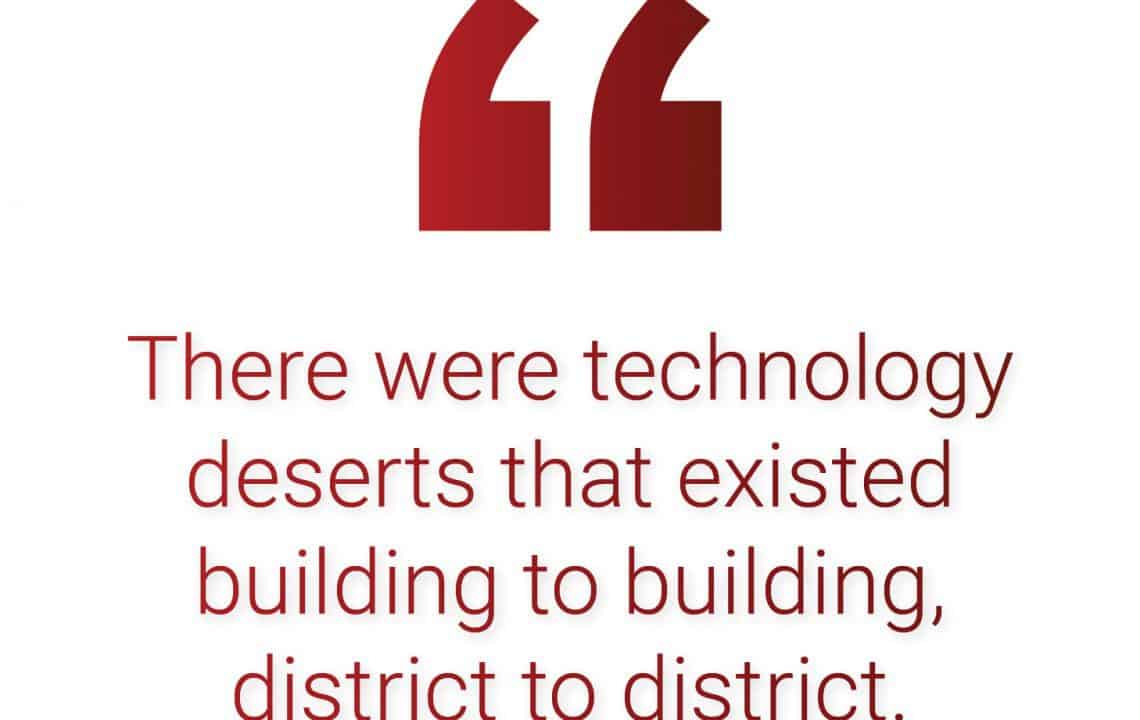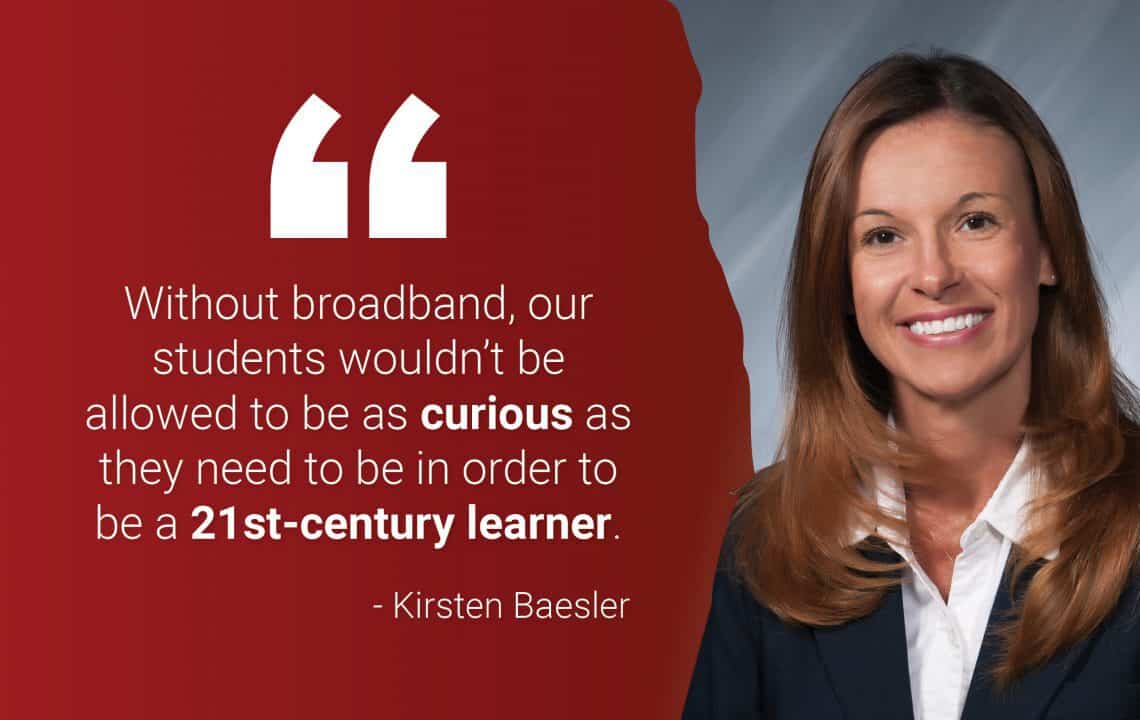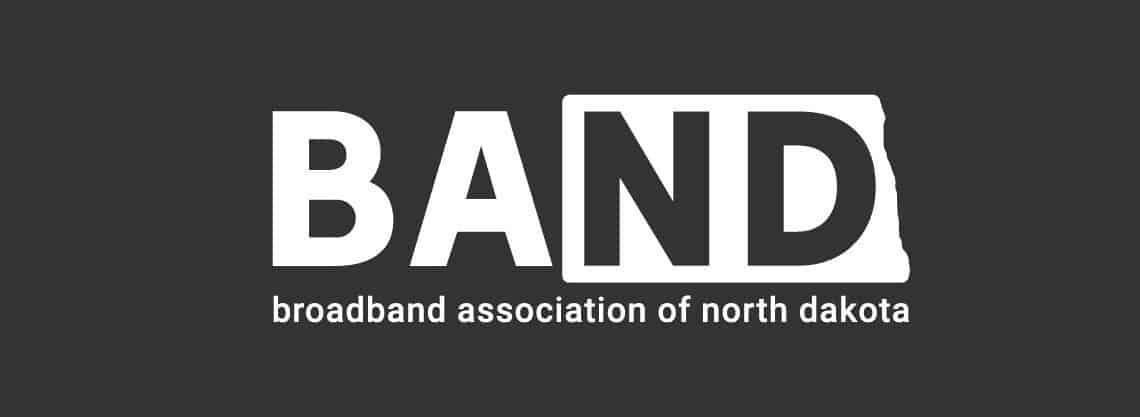
How BAND members, EduTech, and local schools work together to prepare North Dakota students for the future
In a middle school classroom in rural North Dakota, students crowd around a video camera and wave excitedly. Waving back at them from the projector screen at the front of the room is another class of students, in another middle school. The two classrooms are all but mirror images of one another: similar laminate desks, similar pre-teen chatter, similar brightly colored posters on the walls.

The difference? One classroom is in Mexico.
Virtual “pen-pal” relationships like this one are being formed in schools across North Dakota. Partner classrooms are often located in states and countries where North Dakota sends natural gas, coal, soybeans, and other exports. By communicating with their “pen-pals” through video chat, vlogs, podcasts, and other digital formats, students not only learn about the economy in North Dakota but the economies it impacts around the world.
Learning opportunities like these would have been unimaginable two decades ago when Kirsten Baesler served as a Technology Integration Specialist at Bismarck Public Schools. At the time, educators struggled to communicate via dial-up internet with schools across town, let alone across the globe.
“There were technology deserts that existed building to building, district to district,” Kirsten said.
These “technology deserts” are areas that are not connected to the Internet or, as a result, the rest of the world. Not too long ago, North Dakota had some of the largest technology deserts in the country—hundred-mile stretches of state unable to enjoy the benefits of modern technology because of their rural location.
Today, Kirsten Baesler is in her second term as the State Superintendent of the North Dakota Department of Public Instruction. She oversees the 78 school districts that are operating in 470-plus buildings across the state of North Dakota and supports the nearly 120,000 students they serve.

Lorem ipsum dolor sit amet, consectetur adipiscing elit. Suspendisse non dapibus est, in placerat libero. Quisque vehicula dignissim dictum. Class aptent taciti sociosqu ad litora torquent per conubia nostra, per inceptos himenaeos. Ut eu pharetra dui. Aliquam fringilla aliquam turpis, gravida consequat enim. Quisque libero leo, feugiat ac posuere ac, ornare sed mauris. Morbi mattis, sapien nec interdum volutpat, enim orci congue purus, in suscipit dui sem vitae orci. Donec eget sem eu leo gravida feugiat ut nec nisi.
She recognizes that virtual “pen-pal” partnerships, as well as countless other educational opportunities, would not be possible for students—especially in rural areas—without the high-quality, dependable broadband provided by the 18 member organizations that make up the Broadband Association of North Dakota (BAND).
“When we had the opportunity to scale out our broadband connectivity to all of our schools, it removed the technology deserts in our state, and it opened up the opportunity of equity for our schools,” she said. “Without that connectivity to our rural school districts, we would continue to have the ‘haves’ and the ‘have nots’ as far as classroom technology.”
Creating equal access to technology in all North Dakota schools has been a collaborative effort; widespread broadband access would be of no benefit to North Dakota schools if the schools did not know how to best use it to serve students. Where BAND has laid the foundation, EduTech has provided the tools and materials needed to build a state-wide, one-of-a-kind classroom technology system in North Dakota.
EduTech is a state agency under the supervision of the North Dakota Information Technology department that provides technological support and instruction to all K-12 schools in North Dakota. This is unlike many other states’ structures, in which districts provide IT service internally.
Resources offered by EduTech include day-to-day support for PowerSchool, the software utilized by schools to manage instruction, grading, attendance, and finances; cybersecurity support and training for teachers, school leaders, and students; and professional development to inform educators on how to use data to better inform their instruction.
While serving as State Superintendent for the past six years, Kirsten has seen how other states are navigating technology in education—and gained a new appreciation for EduTech along the way.
“I have seen first-hand how fortunate we are to have the vibrant, robust program of EduTech providing these services to all of our school districts in the state,” she said.
“What they have done, especially in a rural state like North Dakota, is help teachers leverage the tool of technology and meet students where they are at in their learning journey.”
And virtual “pen-pal” assignments are just one way that North Dakota schools are leveraging technology to support their curriculum. Teachers rely on high-speed broadband connections to deliver adaptive assessments on laptops and tablets. They not only allow, but encourage students to use the Internet to seek out additional information on their lessons.
All, Kirsten says, in the hope of preparing students for their future in an increasingly connected world.

“Without broadband, our students wouldn’t be allowed to be as curious as they need to be in order to be a 21st-century learner,” she said. “We are going far beyond just measuring test scores in reading, math, and science. We’re looking for students that are super engaged, that are not only turning their homework in on time, but are actually looking for more information about that subject area. They are watching videos on YouTube to support their curiosity about a science project or an economics lesson.”
To Kirsten, the collaborative efforts of BAND, EduTech, and local schools to provide the highest quality of education for students—no matter how rural—reflects what North Dakota is all about.
“When I think about North Dakota, I think about one community with a really long main street,” she said. “It is all one community working together to make sure that our students have what they need to prepare them for their future.”


